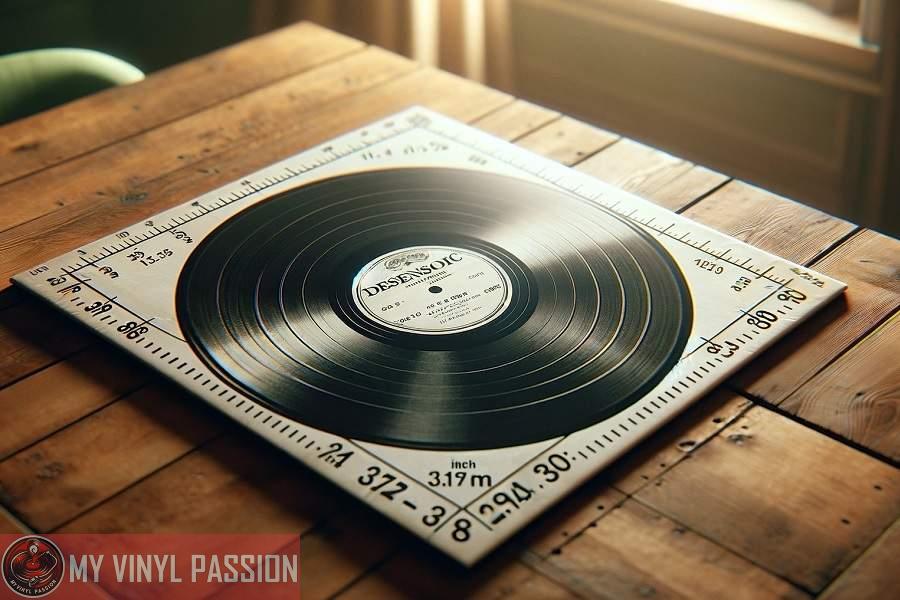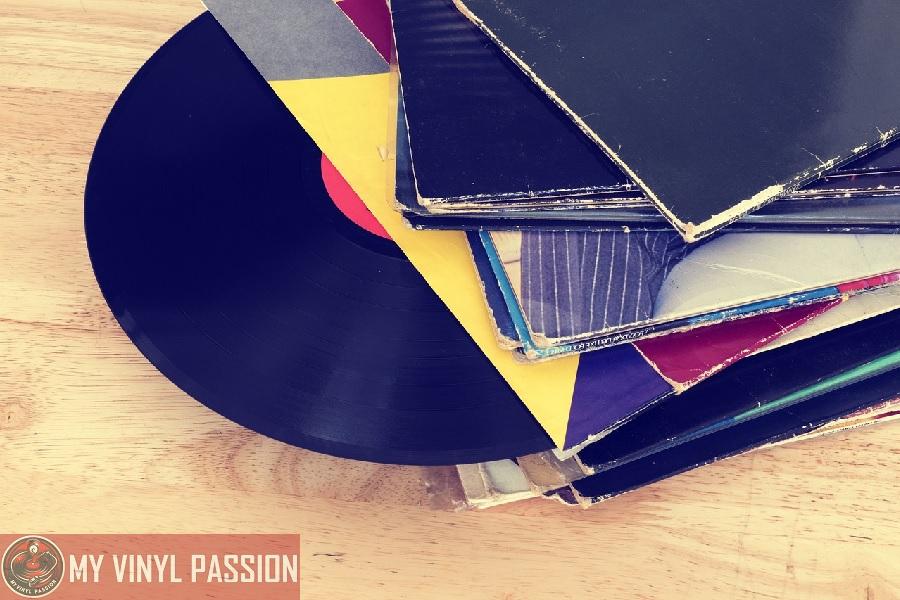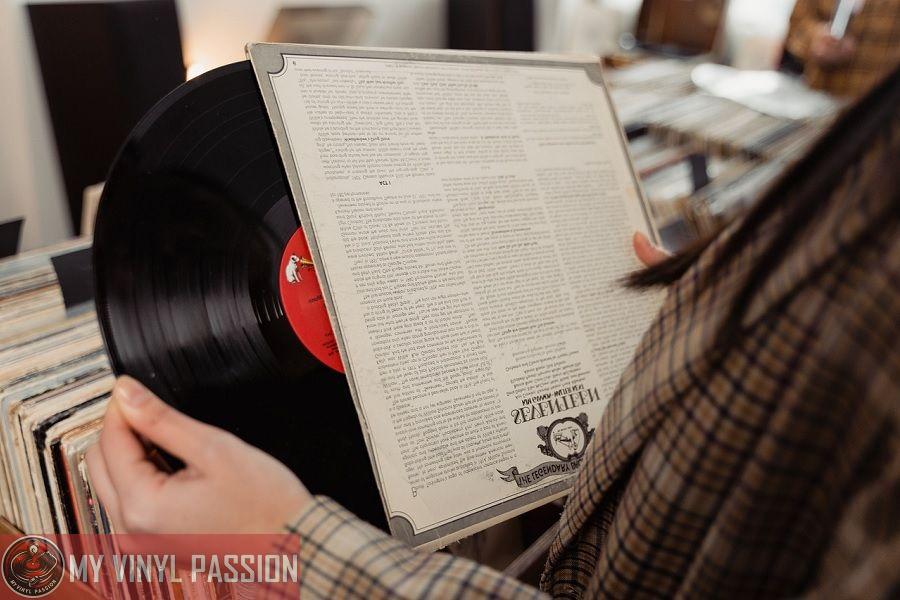When you hold a vinyl record sleeve, you’re not just holding a protective cover for the music within, but a piece of art that often reflects the era and culture of the music.
The standard dimensions of a vinyl record sleeve, which houses the actual vinyl record, are 12.375 inches square for LP albums.
These sleeves are designed to fit the 12-inch records that became the dominant size for albums due to their ability to hold more music compared to smaller 7-inch singles, commonly used for individual songs or shorter records.
In Summary
Standard LP Sleeve Size: The typical sleeve for a 12-inch LP (Long Play) vinyl record measures approximately 12.375 inches square (31.43 cm).
7-inch Single Sleeve Dimensions: Sleeves for 7-inch singles, often used for individual songs, are usually about 7.25 inches square (18.42 cm).
Gatefold Sleeve Size: Gatefold sleeves, which open like a book and hold one or two records, have the same height and width as standard sleeves but double the spine width to accommodate additional vinyl.
Thickness Variation: The thickness of vinyl record sleeves can vary, with some deluxe or special editions being made of thicker, more durable materials or including additional artwork and liner notes.
The popularity of vinyl records has experienced a significant resurgence, reminding us of the tangible and visual aspects of music collecting.
Vinyl record sleeves serve as a canvas for artwork and information, contributing to the overall experience of the record.
The artwork and additional elements like liner notes or lyrics inserted in the sleeves have become part of the vinyl experience, treasured by collectors and music enthusiasts alike.
For those singles or EPs that are typically pressed on 7-inch records, their corresponding sleeves are smaller, usually measuring approximately 7.25 inches square.
These sleeves, while compact, still offer the essential protection and often vibrant artwork or information about the music they encase. Whether part of a DJ’s arsenal or a collector’s pride, these vinyl records and their sleeves hold an enduring appeal, testaments to a music format that has stood the test of time.
Physical Dimensions and Formats
Vinyl record sleeves are designed to protect the record and provide information about the contents, with varying dimensions tailored to fit different record formats.
Standard Sleeve Sizes
Your standard vinyl record sleeves come in three main sizes corresponding to the diameter of the records they enclose:
- 12-inch Records: The most common album sleeve size for LPs measures approximately 12.375 inches square (31.43 cm). The minor variations are dependent on the manufacturer.
- 10-inch Records: Often used for EPs or earlier vintage records, these sleeves are typically around 10.25 inches square (26.04 cm).
- 7-inch Records: Singles are usually housed in sleeves that measure about 7.25 inches square (18.42 cm).
It is essential to note that these dimensions are for the outer sleeves. Inner sleeves that hold the actual vinyl might be slightly smaller to fit snugly within the outer sleeve.
Common Vinyl Record Formats
Your vinyl records come in distinct sizes which reflect their playback speed and capacity:
- LP Records (Long Play): Typically 12 inches in diameter, these records play at 33 1/3 RPM and are the standard format for albums.
- EP Records (Extended Play): Often 10 inches in diameter, these play at either 33 1/3 or 45 RPM and generally contain more music than a single but less than a full album.
- Singles: These are commonly 7 inches in diameter, playing at 45 RPM and feature one track per side.
More specialized sleeve types exist for different uses:
- Gatefold Sleeves: These are larger and fold open like a book. While the dimensions of a closed gatefold sleeve typically match the standard album sleeve size, when opened, they’re double the width, providing additional space for artwork and information.
- Double Albums and Box Sets: These can vary in size and often come in thicker, more robust sleeves to accommodate multiple records.
Material and Structure
Your vinyl record sleeves not only serve as a canvas for artwork but also play a crucial role in protecting the delicate surfaces of vinyl records. They’re designed from various materials, each offering different levels of protection and durability.
Sleeve Materials
Cardboard Sleeves: Typically, the outer sleeve of a vinyl record is made from cardboard, providing a sturdy exterior that safeguards the record from knocks and bends. This is your record’s first line of defense.
Paper Inner Sleeves: Inside, you’ll find the record often housed in a paper sleeve, which offers a basic level of scratch protection. However, paper can shed tiny fibers that may cause static or get onto the record’s surface.
Polyethylene and Polypropylene Sleeves: Upgrading to inner sleeves crafted from polyethylene or polypropylene can enhance the protection. These materials are smoother than paper, reducing static and the risk of scratching your record.
Gatefold Sleeves: Some albums come in gatefold sleeves, which unfold like a book and are made from a double layer of cardboard, providing even more robust protection and space for additional artwork or information.
Clear Outer Sleeves: For extra security, many collectors place their vinyl record within a clear outer sleeve. These are often made from polyethylene or polypropylene, shielding the cardboard sleeve from dust, spills, and wear.
Protection Mechanisms
Buffering from Damage: The combination of an outer cardboard sleeve and inner sleeves made from softer materials buffers the record against physical damage, like impacts and pressure.
Shielding from Dirt and Static: Specialty inner sleeves, especially those made from anti-static materials, help to keep dust and dirt at bay, avoiding scratches and playback interference.
When handling your vinyl records, ensure that you replace worn sleeves with new ones to maintain an optimal level of protection, and consider upgrading to higher-quality inner sleeves if preservation is a priority.
Preservation and Handling
When preserving and managing your vinyl record collection, it is essential to consider both the prevention of potential damage and the implementation of appropriate storage solutions to prolong the lifespan of your records.
Preventing Damage
Your vinyl record sleeves are the first line of protection against dust, dirt, and other contaminants that can cause friction and degrade the quality of your records.
To prevent damage, handle your records with clean hands and ensure they are returned to their sleeves immediately after use. Always hold the records by their edges to minimize contact with the playing surface.
Give your records and their sleeves some breathing space; they should not be packed too tightly on shelves or in boxes as pressure can lead to warping.
Storage Solutions
The right storage solution is critical for preserving the lifespan of your vinyl records. Invest in high-quality, acid-free inner sleeves that ward off static and additional outer sleeves for extra protection.
Utilize sturdy record storage units that can provide a stable environment, free from excessive humidity or temperature fluctuations. Be mindful of your budget, but remember that adequate storage preserves your collection in the long term.
Keep your records upright and provide sufficient space between them to minimize friction and pressure. Regular cleaning to remove dust and dirt is also indispensable for maintaining the integrity of your records.
Art and Design Aspects
The dimensions of a vinyl record sleeve play a crucial role in shaping the visual and physical aspects of album presentation. Important to both artists and collectors, these dimensions accommodate creative designs and assure protection of the record.
Visual Elements
The standard dimensions for a vinyl record sleeve are typically 12.375 inches square for LPs. However, variations exist, especially in specialty items like box sets and gatefold sleeves.
The gatefold design, which unfolds to reveal a broader canvas, doubles the width. This space provides a larger area for album art, allowing for more intricate and expansive designs. Cover art is not just an aesthetic feature; it’s key to the identity of the music and the artist, often becoming iconic in its own right.
Physical Design of Sleeves
Sleeves are designed to protect the vinyl record from wrinkling, dust, and other damage. They come in multiple forms, from the simple paper sleeve to more durable materials used in box sets.
Thick cardboard is commonly used for outer sleeves, providing a sturdy cover that withstands wear over time. The precise fit helps to keep the record snugly in place, reducing the risk of slipping and scratching.
The Listening Experience
The listening experience of vinyl records is deeply connected to their tangible properties and the interaction with the playback equipment. Achieving optimal sound quality hinges on factors like the condition of the needle and the calibration of your turntable.
Impact on Playback Quality
When you place the needle onto the grooves of a vinyl record, the precision of this physical interface is paramount. The depth and precision of the grooves, especially on a 33 1/3 rpm LP record or a 45 rpm single’s b-side, directly affect the clarity and richness of the sound you hear.
Even minor scratches can significantly deteriorate the playback quality, introducing noise or skips. Vinyl enthusiasts often seek out 180-gram vinyl pressings for their added durability and presumed enhancement of sound quality due to their increased mass and stability.
A well-maintained vinyl sleeve helps protect against dust and scratches, preserving the fine grooves and intricate details that embody the high sound quality that vinyl is celebrated for.
To compare, a scratched or dusty record will often produce audio laden with pops and cracks, detracting from the intended listening experience.
Relation to Turntable Equipment
Your turntable plays a critical role in translating the grooved analog signals into audible sound. Ensuring that your turntable is set at the correct rpm (revolutions per minute) is crucial for accurate playback time and pitch.
Most full-sized albums are played at 33 1/3 rpm, while singles or EPs typically rotate at 45 rpm. A select number of old records, especially those made before the 1950s, may even require 78 rpm for proper playback.
The needle, or stylus, of your turntable is the part that actually traces the grooves on the vinyl record to produce sound. Over time, the needle can wear down, which not only compromises sound quality but can also potentially damage the vinyl.
Regularly inspecting and replacing the needle as needed will ensure that the analog warmth and fullness of your records are preserved for years of listening.
FAQs
What are the standard dimensions of a 12-inch LP vinyl record sleeve?
The standard sleeve for a 12-inch LP record is approximately 12.375 inches (31.43 cm) square, designed to comfortably house the vinyl record.
How big are the sleeves for 7-inch single vinyl records?
Sleeves for 7-inch singles typically measure about 7.25 inches (18.42 cm) square, suitable for the smaller size of these records.
Do double LPs or gatefold sleeves have different dimensions?
While the height and width of gatefold sleeves remain similar to standard LP sleeves, they have a wider spine to accommodate two records or additional artwork and liner notes.
Are there variations in sleeve thickness for vinyl records?
Yes, the thickness of vinyl record sleeves can vary, especially with deluxe or special edition releases, which may use thicker, more durable materials for added protection and aesthetic appeal.
Can vinyl record sleeves be custom-sized?
Custom-sized sleeves are possible, especially for special releases or limited editions, but they generally adhere to the standard dimensions to ensure compatibility with storage and display systems.





